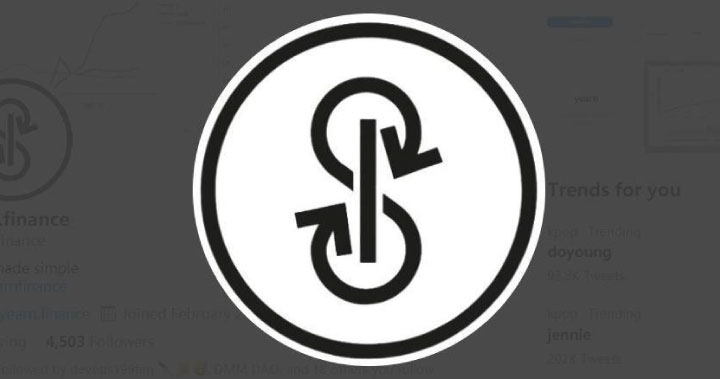
YFI (Yearn.Finance), known as "Uncle" in China, is another cryptocurrency after Bitcoin whose price exceeds 10,000 US dollars. The issuance method of YFI is similar to that of Bitcoin. It is completely produced by community mining and has no private placement or team tokens. Therefore, it is known as Bitcoin in the Defi world. This article will delve into the origin and development of YFI and the founder behind it, Andre Cronje.
The birth of YFI
In the early stages of YFI's development, the team realized that many Defi lending platforms on the market had interest rate spread issues. For example, for the same deposit of USDT, Compound's return may be 5%, while Curve's return may be 7%. In order to help users maximize their profits, founder AC solved this problem using smart contracts. Users only need to put funds into the liquidity pool, and the smart contract will compare the annualized yields of different lending platforms and automatically transfer the funds.
From this, Yearn.Finance came into being. Users can deposit stable coins into the Yearn protocol, and the Yearn protocol will be adjusted in protocols such as Compound, Aave, and dYdX to obtain higher returns. Although Yearn did not attract much attention when it was first founded, it rose to fame in just one month with the issuance of the governance token YFI.
YFI’s governance token
YFI is Yearn's governance token, with a total issuance of only 30,000. There are no team shares, pre-mining and public offerings, and even the founders themselves have no token rewards. All tokens are produced by mining. Users can obtain a certain number of YFI tokens by depositing tokens in Yearn's designated income pool. The circulation of YFI is halved every certain period. By the end of July, all 30,000 YFI have been issued.
Due to the halving mechanism, users who joined early received more YFI, attracting a large influx of investors, causing the price of YFI to skyrocket rapidly. In just 43 days, the price of YFI soared from the initial few dollars to tens of thousands of dollars. Subsequently, YFI's popularity attracted the attention of leading exchanges, and it successively landed on first-tier exchanges such as Binance, OKex, and Huobi, becoming the darling of the market.
The reason for YFI’s surge
The price of YFI has skyrocketed mainly for the following three reasons:
Stability after mining ends: With the end of YFI mining, the market hype has subsided, and Yearn's products have gradually improved.
Diversified products: Yearn's products include vaults, earn, zap, cover and other functions to meet the different needs of users. For example, vaults (machine gun pool) allows users to deposit liquidity certificates and obtain annualized returns of up to 23.7%; while earn is similar to Alipay's Yu'e Bao, and you can obtain returns by depositing funds.
Community support: Yearn’s success is inseparable from the support of the community. The fairness of DAO attracts top talents from around the world to join, allowing Yearn to stand out in the fiercely competitive market.
Yearn's main products
Vaults (machine gun pool) The machine gun pool allows users to deposit designated liquidity certificates into the pool to obtain a certain amount of income. Currently, a total of 12 types of LP tokens are supported for deposit. Users do not need to manually collect the income. They only need to pay a certain handling fee when entering and exiting, saving a lot of gas fees.
Earn: The function of Earn is similar to Yu’E Bao, users can earn income by depositing funds. Unlike machine gun pools, Earn deposits a certain kind of token, and its income fluctuates with market changes. However, its income still exceeds many traditional banking products.
Zap: Zap provides a low slippage exchange function. Users can easily exchange various LP tokens, eliminating the cumbersome operation of manual staking.
Yinsure: Yinsure is decentralized insurance. After users pay a certain insurance premium, they can provide protection for the pledged pool. In the event of hacker theft or other incidents, users can receive compensation.
FounderAndre Cronje
The founder of YFI, Andre Cronje (AC for short), has rich professional experience. He graduated from law school, taught himself computers, and started out as a programmer. Before entering the cryptocurrency field, AC was involved in many fields such as communication technology, mobile network security, bank payment and big data.
In 2016, AC came into contact with the distributed consensus project and was deeply attracted by it. After that, he began to share the project's code review on the encryption media website CryptoBriefing to help others learn. After experiencing the turmoil of 2019, AC decided to move assets to stablecoins and spent a lot of time looking for places with the highest interest rates to manage funds. Eventually, he founded Yearn in 2020.
Yearn's success is not only due to AC's efforts, but also the support of the community. The fairness of DAO has attracted many top talents to join, allowing Yearn to occupy a place in the market.
Conclusion
YFI's success is a combination of necessity and chance. As the first Defi revenue aggregator, Yearn was the first to launch it when the market lacked corresponding products, seizing the minds of users. At the same time, the creative token mechanism also adds many highlights to the project. Although AC successively launched other projects after founding Yearn, it was unable to reproduce the glory of YFI due to contract loopholes and other issues.
In short, YFI is not only an innovative representative in the Defi field, but also an important force that cannot be ignored in the cryptocurrency market. As Yearn products continue to improve, the future development of YFI is worth waiting and watching.